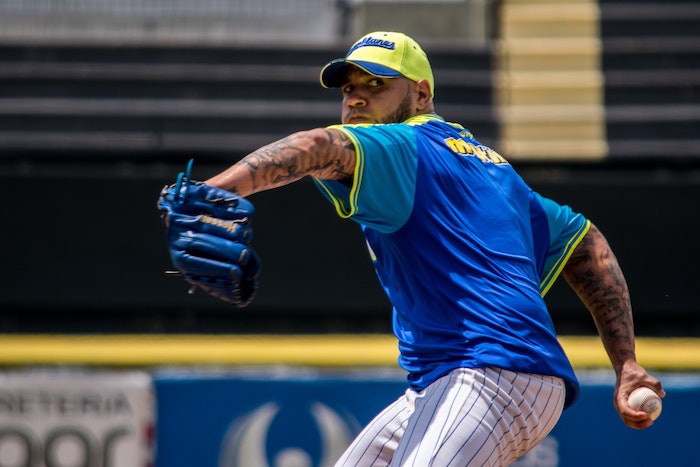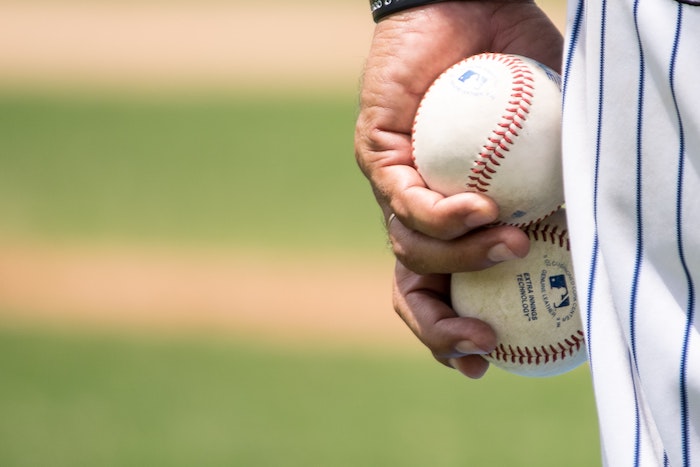The radar gun can be evil at times but it does not lie. Pitchers anxiously await the arrival of the radar gun to games or bullpen sessions like young children waiting for Santa to deliver presents on Christmas Eve. During workout sessions the first question I often hear is, "Did you bring the gun?" It is a sign of modern day amateur baseball in America to see the Stalker, Pocket Radar, or Jugs guns hoisted at arms length of the "decision makers".
We all know who the coaches and scouts are, don't we? They are the ones with their team's logo on a shirt, hat, folding chair, and briefcase. How many of us have hunted for the college or pro scouts at a game? Or took a walk into the sacred area in the stands or behind the backstops to check velocity readings?

A quick story about the elusive 90 mph fastball
I have been asked by some of my Mystic Schooners pitchers to hover near the scouts in attendance and get their velocity reading. One particular time, time seven years ago, we had a great pitcher on our Schooners team, an all-star who was dominant all summer with a three pitch arsenal as good as anyone in our league (NECBL). At the all-star game my main job was to be ready to get behind the backstop when he got his inning of work (it was the seventh I believe) and check for the magic number - the 90 mph reading. He was consistently 89.

The season continued and this kid was great to the end, helping us to the playoffs and pitching one of the most dominant performances in Schooners history for his last outing. He had a great summer. But, he never had similar success after that summer and consequently stopped playing soon after college.
Personally I think he could be gotten over 90. I never had the chance to spend enough quality bullpen time with him (not that I have the guaranteed solution, I don't believe anyone does) and give him some ideas (that i'll share with you below) to confidently take his game to the professional level. As a pitching coach in an elite summer league this remains the most significant down side, the fact that I may never cross paths with most of these guys after a summer, maybe two. Together we spend each day over the course of nine summer weeks working, tweaking, talking, calculating, experimenting, and immersing ourselves into baseball pitching. In my mind there is no better way to spend a summer.
Maybe I am posting this for him and the other guys who perhaps were prematurely disheartened falling short of the "magic number". All pitchers must embrace the challenge of being the best pitcher they can be.
So, is throwing a 90 mph fastball important?

In an interesting conversation this past summer in Mystic a prominent east coast scout for a MLB organization flat out stated,
"There are more pitchers who possess 90-plus fastballs these days who are not pro prospects."
Why? They lack pitching aptitude and the mental wherewithal to compete where hitters can easily handle the velocity. By the time they are in college it is almost too late to rebuild the complete pitcher and professional teams are reluctant to invest into a player who has too much catch up work ahead. Throwing hard helps, but it's not everything.
When should you learn how to throw 90 mph?
For most of us 90 mph should not be in any discussion until one is approaching age 20. There are amazing stories each year of the young phenoms in the 90's - these are physically gifted pitchers, end of story. We should enjoy watching them perform with a perspective that they are in the minority of all baseball pitchers in the world. Are they complete pitchers? Of course not, it still takes time. They happen to have the luxury of learning "how to pitch" while most others are learning "how to throw harder".
So, how hard is it to throw a 90 — consistently?
Remember, "Touching" 90 is not "throwing" 90. It takes training and body control to be able to maintain a 90 mph fastball over the course of a game. Lifting weights is often suggested as a key to finding more velocity. If a college coach is talking to a prospective pitcher and mentions that he needs to put on, "five or ten pounds" (a frequent occurrence), treat it as compliment. In others words the pitcher has the skill set necessary to pitch at the college level but increased velocity is necessary to ensure success (i.e. playing time) in that particular coach's mind.
1. Be careful with weight training
If this is your method of choice to gain velocity, know that it is not a guarantee. Balance and body control, essential in pitching, is difficult to maintain with straight lifting-only routines.
2. If you do lift, bring a baseball with you
For pitchers that do choose to lift please bring a ball with you in your equipment bag - bounce it off a wall or play catch with someone after you lift. The small muscles in the body are the ones that need to stay coordinated. Sounds small, but it is, and that's what matters.
Think about it - the body is a series of hinges that, when pitching, need to be in perfect sync. An over-muscular body will create difficulty in keeping the hinges working freely. Tightness is the enemy of velocity (note the intentional bold print).
3. Challenge the smallest muscles in your body to get stronger
If you are serious about pitching challenge yourself to workout the smallest muscles in your body as hard as you can. In other words, work backwards from small to large. Begin making your fingers, hands, and forearms stronger than ever. Then think about your feet, ankles, and calves. Can you balance for 5 minutes on one leg, then the other? Follow up with the small muscles in the back (band work) until they burn - it should be as regular as brushing your teeth.
There will be plenty of time for working the heavy muscles, especially during the off season (don't force the lifting during the season, try to focus on being a better pitcher and getting batters out!).
4. Establish a routing, but don't be afraid to make adjustments:
What you are reading is certainly not new but it needs to be repeated often and if you have hit the velocity "wall" and haven't been able to get that additional mile or two, take a hard look at your training. It may be time for an adjustment.
5. Ask for help
If you did not get the results you were hoping for this past season or are looking to keep advancing to higher levels. If you are not asking questions you are not improving yourself!
6. Finally, use a radar gun! ...But here's how:
Ok back to the gun. A good way to utilize the radar gun as a training tool it to break it out early in your training rather than when you are primed to give it your all. If it is between starts on a flat ground session use the gun's reading as you tweak some body mechanics. If you are tossing a ball at 64, for example, and make a small adjustment in the position of your legs resulting in a toss of maybe 66 - then you are possibly onto something that can help.
This past winter I broke out the gun on the first day of workouts in January. As odd as it may seem (and there were some surprised looks) we started with 25 foot tosses at 45 mph, made some fundamental adjustments and in some cases found 47, 48 mph start going into the target...it is not always the case but it creates focus from day one on mechanics without the stress of trying to light up the gun! The radar gun can really help you with your form - who would have thought?
Remember, the radar gun does not lie and for that reason, it can help you. Just make sure if you are going to use one, you put it to good use.
